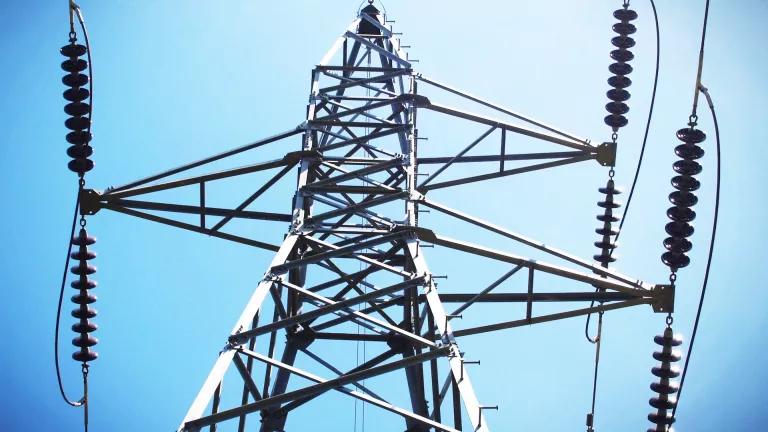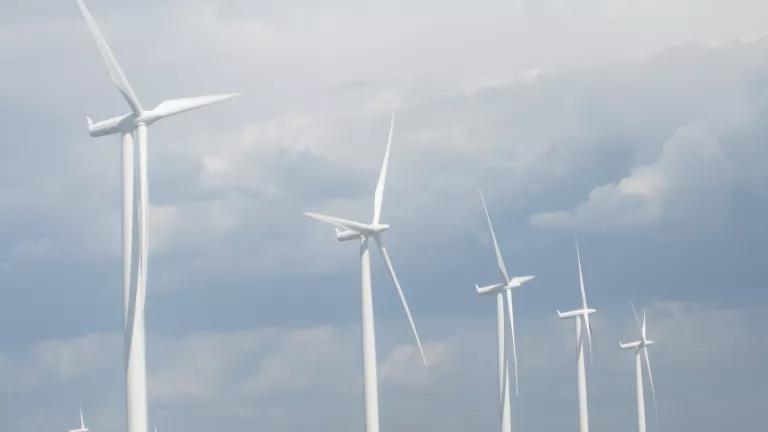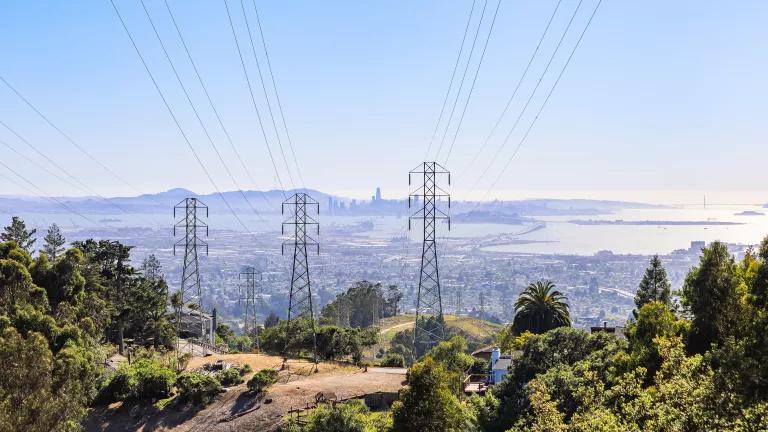The Heat Was On and Our Power Grid Held: But Will It Next Time?
It wasn’t easy, but the U.S. power grid defied record-breaking heatwaves and doomsday warnings to survive the summer without major service interruptions.

With climate risks growing, we need to build a more nimble and reliable grid for the future.
It wasn’t easy, but the U.S. power grid defied record-breaking heat waves and doomsday warnings to survive the summer without major service interruptions.
In June, I noted that grid operators and utilities would need to maximize the use of energy efficiency and demand response to avoid blackouts, and that’s just what they did. Consumers showed up when the grid needed them most, and despite record hot temperatures throughout the West, the system held.
But our century-old grid faces new challenges, and without proper planning and continued action, we might not be so lucky next time. Given the scale of the climate emergency before us, we need to build a cleaner, more nimble grid, one that doesn’t exacerbate climate change and is more resilient to extreme weather. That means adding significantly more long-distance transmission lines and expanding energy efficiency, demand response, and energy storage. We can do it, and the recently passed federal climate bill is a great first step.
Hot, hot, hot
In a summer of blistering temperatures across several states, Mother Nature saved the worst for last. Over seven days that spanned the Labor Day weekend, record-breaking heat stretched from Los Angeles to Denver as demand for power surged.
First, some good news
In California and across the country, grid operators tapped into an expanded tool bag to avert worst-case scenarios. Using every tactic at their disposal, including energy efficiency and demand response, California grid operators managed to keep the lights on, despite entering the summer with low water levels that reduced hydro resources, pumped storage, and the stock of water available to cool gas and nuclear plants. Among the most successful strategies deployed was a call for voluntary conservation after state agencies sent out text notifications asking customers to turn off lights and turn down air conditioners to avoid rotating outages. This resulted in Californians immediately reducing demand by roughly 2 gigawatts (GW).
While voluntary calls for conservation are no substitute for compensated demand response, they can be effective in the most extreme circumstances. California also leads the nation in utility-scale battery storage with 3,163 megawatts (MW) as of June 1, according to CAISO (California Independent System Operator). It’s an impressive achievement given that only two years ago, California had about 250 MW of storage. More is on the way. California recently approved a plan for 15,000 MW of new storage and demand response resources to be installed by 2032.
Texas also suffered from record-breaking heat and called for conservation in the face of potential high heat and record demand in July. Luckily, wind generation rallied, and blackouts were avoided. The call for conservation was lifted later on a particularly critical day. As my colleague John Moore points out, wind coupled with solar, which accounts for a record share of power generation in Texas, helped save the day while thermal plants that burn coal or natural gas struggled under intense heat.
Solar power in Texas “has been the star of the Texas grid so far during this interminable summer, continuing to set records for energy production,” the Texas Monthly reported on July 12, noting solar production is now twice what it was just a year ago. “If your air conditioner has been steadily running all summer long, you can thank the mighty power of the sun.”
Now the bad news
Without reforms to upgrade and expand our century-old transmission system, hotter heat waves, stronger storms, and more intense flooding will continue to stress critical systems with potentially devastating consequences. The Sustainable FERC Project and other public interest groups are supporting two proposed rules from the Federal Energy Regulatory Commission (FERC) that would put the utility industry in a better position to withstand extreme weather and help prevent blackouts and other power woes.
FERC is also tackling the thorny issue of transmission planning. In the United States, transmission planning has failed to anticipate future needs, principally the need to accommodate the shift to renewable energy resources. If we cannot move clean energy from remote areas where it is produced to big cities and towns where it can be used—and in some cases, across multiple transmission regions—keeping the lights on and air conditioners running will become increasingly difficult. The Sustainable FERC Project and others support FERC’s direction here, but urge regulators to go further by mandating long-term regional planning with specific criteria and highlighting the benefits of transmission to customers.
California’s access to a giant, regional power grid helped the state survive the summer. Most of Texas is isolated with no access to out-of-state power. The western grid covers an area seven times the size of Texas, including two Canadian provinces. This creates geographic diversity that helps grid operators tap generators experiencing different weather systems, essentially smoothing out temperature extremes and fluctuations. It also allows access to geographically diverse power sources like hydropower, wind, and solar. The Pacific Northwest, for example, was cooler than its neighbors during the late summer heat wave, and its huge hydropower system was spared the worst of recent drought conditions. CAISO was able to import power from its neighbors thanks to interregional transmission connections.
What’s next?
While we made it through this summer, climate change–induced extreme weather is expected to become more frequent. We can do much more to avoid dangerous and destabilizing power outages and make our power grid better able to handle extreme weather. Planning transmission upgrades for the future we know is coming is a good place to start. And as I write, there is almost 1 terawatt of renewable energy waiting to interconnect to the grid, enough power for tens of millions of homes, including an estimated 427 GW of storage capacity as of 2021. We need to speed the process to allow these resources onto the grid.
FERC is reviewing its transmission and interconnection rules. Changes will be vital to ensuring a robust electric grid that can unlock the full potential of clean energy resources and deliver reliability and resilience benefits while reducing consumer costs. To protect against extreme weather, we need a robust transmission build-out that will allow utilities to import power from neighboring regions with milder weather and diverse generating resources. FERC’s transmission rules are a start to this, but it needs to finalize robust rules and tackle the issue of interregional transmission. And the new interconnection rules are key to unlocking the 1 terawatt of renewable energy and 427 GW of storage just waiting to come online.
Meanwhile, the West is considering west-wide markets. A recent study by Advanced Energy Economy showed that a west-wide regional transmission organization would benefit the region and individual states. CAISO imported up to 10 GW of power to help keep the lights on, but it could have imported and shared more with a regional grid.
We made it through this summer, and that’s good. But we can’t take the foot off the pedal. We need to continue to add transmission, build and connect clean energy resources, and expand demand response, energy efficiency, and electric storage so we can keep the lights on in the face of ever-worsening extreme weather.


